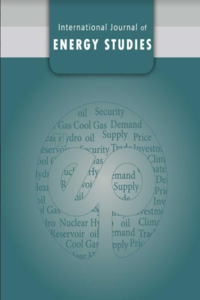Nuclear Power, its Waste in the World and in Turkey
2017
Dergi:
International Journal of Energy Studies
Özet:
Nuclear power plants were born in 1950s. Taking only 30 grams of used fuel annually for a person’s energy consumption many countries built their own nuclear power plants. In this story, there is the fuel on one hand and the waste on the other. In general sense, used up fuel rods from nuclear reactors and the waste from reprocessing plants are referred to as nuclear waste. These wastes can be stored for decades in the cooling pools of nuclear reactors (world-nuclear.org). Nuclear power plants are only one source of nuclear wastes, the others are medicine, research facilities, oil and gas extraction, mining, etc. Not all of this waste is produced inside reactors, but they come from concentrated natural structures. This waste is divided into three categories, yet, the boundaries between the categories differ from country to country. • High Level Waste (HLW): This waste is still very radioactive and continues to produce heat. Only 2% of nuclear waste falls into this category but 98% of radioactivity comes from this. They are transported by dry cast storage containers which weigh 100 tons when empty and can contain 12 tons of HLW and cost €1.5 million each. If used reactor fuel is to be reprocessed, the final liquid HLW product needs to be solidified. This product is made into a glass of borosilicate. • Intermediate Level Waste (ILW): It usually comes from reprocessing plants, research facilities and turned-off reactors. They are transported by several cylindrical containers that are painted yellow for identification. The wastes are compressed to save from volume. • Low Level Waste (LLW): This category is still radioactive and produces a small amount of heat but does not require cooling. The majority of all nuclear wastes are considered LLW. Like ILWs, they are transported by several cylindrical containers that are painted yellow for identification. The wastes are compressed to save from volume. Nuclear Waste Share Radioactive content HLW 3% 95% ILW 7% 4% LLW 90% 1 % Table: Nuclear waste categories (world-nuclear.org) Some of the nuclear waste keep generating heat, some of HLW and ILW can heat up their close surrounding up to 200oC. Next, not only nuclear power plants but also medical centers, industry, and the military produce nuclear wastes. Nuclear waste cannot be recycled like conventional wastes. They are carried to repurposing plants to gain plutonium which is used for building weapons. There are only two such facilities in Europe, one in England (accepting waste from the UK, Japan, Germany, Switzerland, Spain, Sweden, Italy, the Netherlands and Canada) and one in France. Yet, not all states carry out repurposing, for example, Germany banned transportation of nuclear waste to reprocessing plants in 2005 since they see it hazardous to the environment. Plutonium oxide is sometimes mixed with uranium oxide that gives us MOX, mixed oxide fuel (world-nuclear.org). Technetium-99 containing liquid LLWs can be discharged into the sea. This tracer isotope can be distinguished for hundreds of kilometers. However, the amount of radiation received is lower than naturally occurring background radiation (world-nuclear.org). For the special case of the USA, an MIT study on nuclear power summarizes the current situation as follows (The Future of the Nuclear Fuel Cycle, 2011). • Nuclear waste cannot be destroyed; therefore, a permanent repository is needed. • Spent nuclear fuel from LWRs can be processed in order to recover the fissile and fertile parts to be reused in forthcoming days. • Waste management did not occur as an integrated part of fuel cycle. • There is no integrated waste management plan in the USA for nuclear wastes. • Waste management in the USA saw practical and official letdowns. Afterwards, generating power from uranium requires an extra step: enrichment. Only 7 parts in 1,000 uranium atoms are the required isotope of Uranium-235 that is fissile. From 7/1,000, enrichment takes the concentration to 2 to 4% in a process which also produces depleted uranium which cannot be used. In the end, for every 1 ton of enriched uranium, 7 tons of depleted uranium is formed (Seibert, Nuclear Waste). Depleted uranium is stored as uranium hexafluoride which is a gas that is radioactive and highly toxic. Scientists are still in search of disposal methods for this gas as only in the USA approximately 700 kilotons of it is stored (ead.anl.gov). Adding more to the problem, uranium hexafluoride reacts with water to produce the corrosive hydrofluoric acid (Piper, G., 30.6.2007). There is a disputed traffic of uranium hexafluoride from Europe to Russia. Russian institutes can enrich uranium hexafluoride further which then comes back to Europe. German ARTE TV broadcasted a documentary on this issue in the past decade showing satellite images of uranium hexafluoride containers even without a roof over them (Seibert, Nuclear Waste).
Anahtar Kelimeler:

